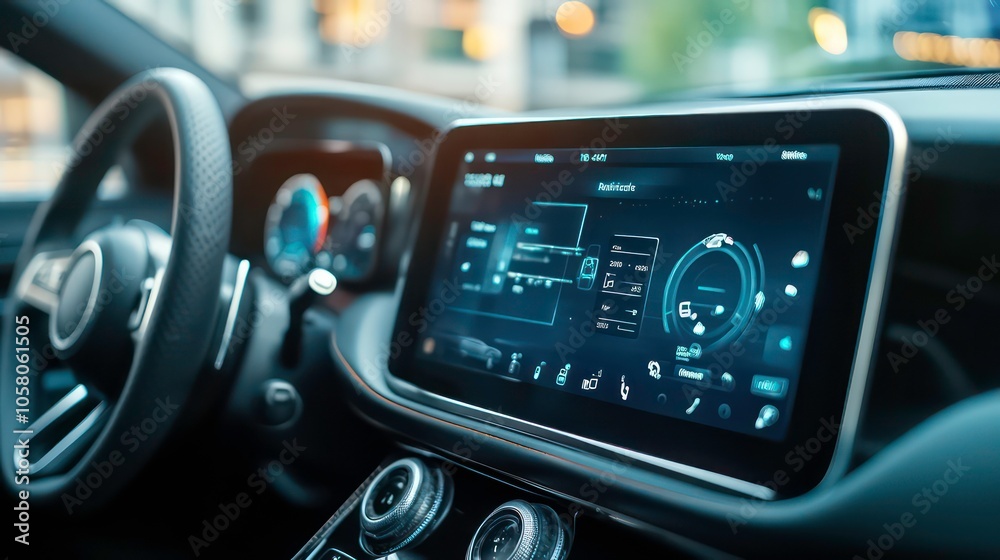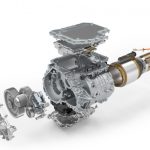Modern cars are evolving into rolling computers, packed with touchscreens, apps, and AI-powered assistants. From over-the-air updates to voice-controlled dashboards, today’s vehicles feel more like smartphones on wheels. But why is this happening? Let’s explore the tech transformation of the automotive industry! 🚀🔋
1. The Rise of Software-Defined Vehicles 💻🚘
Traditional cars were hardware-focused—engines, gears, and mechanical components. But now, software is just as important as horsepower.
✅ Touchscreen interfaces replace physical buttons 🖥️
✅ AI-powered voice assistants manage navigation, calls, and climate control 🎙️
✅ Cloud connectivity enables real-time updates & remote diagnostics ☁️
💡 Example: Tesla pioneered software-driven cars with over-the-air (OTA) updates, allowing performance improvements without a trip to the dealership.
2. Over-the-Air (OTA) Updates: The App Store for Cars 📡🔄
Just like your phone gets iOS or Android updates, cars now receive wireless software upgrades.
🔹 Bug fixes & security patches – No need for a mechanic 🔧
🔹 New features & UI improvements – Better performance over time 🚀
🔹 Self-driving updates – AI-driven advancements for autonomous driving 🤖
💡 Example: Ford’s BlueCruise self-driving feature was added to cars via a software update—no new hardware needed!
3. Infotainment: From Radios to Smart Dashboards 🎵📲
Forget traditional AM/FM radios—modern infotainment systems feel like smartphone screens.
✅ Apple CarPlay & Android Auto – Seamless phone integration 📱
✅ Streaming services – Spotify, YouTube, and Netflix in the car 🎶🎥
✅ AI voice assistants – “Hey Google, navigate to work!” 🎙️
💡 Example: The Mercedes-Benz MBUX system has AI-driven voice recognition, responding to commands like “I’m cold” by adjusting the temperature! ❄️
4. AI, Sensors & Automation: Smarter Driving 🤖🚦
Cars are using machine learning and AI to enhance safety and automation.
🔹 Adaptive Cruise Control – Adjusts speed based on traffic 🚗🚦
🔹 Lane-Keeping Assist – Prevents drifting & accidental lane changes 🛣️
🔹 Parking Assist & 360° Cameras – Helps park with AI-powered guidance 🎥
💡 Example: Tesla’s Full Self-Driving (FSD) Beta uses AI to navigate streets and highways without human input.
5. EV Revolution: Cars Are Going Fully Digital ⚡🔋
Electric vehicles (EVs) are accelerating the smartphone-style transformation of cars:
✅ Battery management apps – Check charge levels remotely 🔋
✅ Wireless key access – Unlock cars with your phone 📱🔑
✅ Smart charging schedules – Optimize energy use ⏳⚡
💡 Example: The Rivian R1T has a companion app that allows owners to lock/unlock the car, control climate settings, and even monitor charging from anywhere.
6. The Future: Will Cars Be More Like iPhones Than Machines? 🚀📡
The next wave of smart cars will introduce:
🔸 Subscription-based features – Pay for heated seats or autopilot via monthly fees 💰
🔸 Autonomous driving – AI-driven self-driving vehicles 🚘🤖
🔸 5G & Cloud-based Navigation – Real-time traffic updates & remote control 📡
💡 Example: Apple is rumored to be working on a fully autonomous Apple Car, integrating deep AI and smartphone-level UI.
Conclusion: Cars Are the Next Big Smart Device 🚗📲
From AI dashboards to over-the-air updates, cars are evolving beyond transportation into software-powered digital hubs. As vehicles become more connected, intelligent, and personalized, they are shaping the future of mobility—just like smartphones changed communication! 🚀📡


